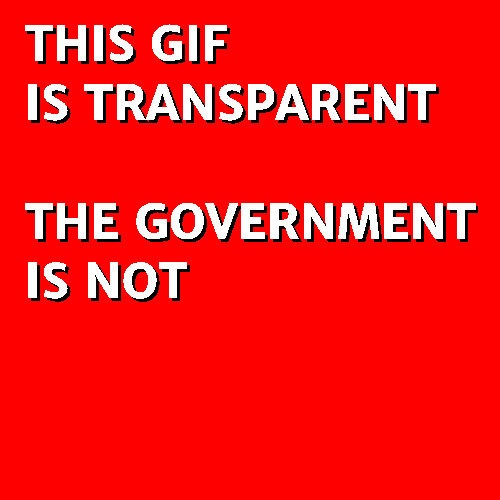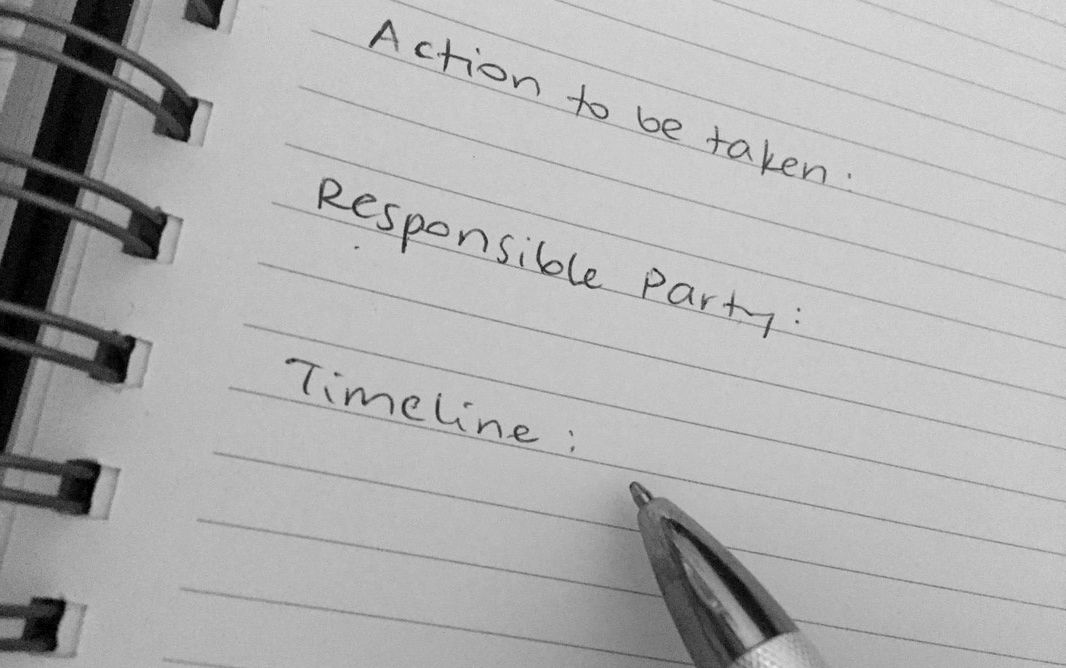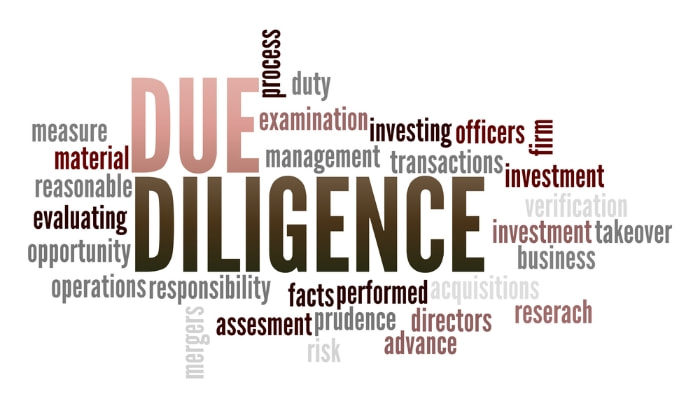|
By better I mean more effective.
Recall the last meeting you were in? Did you feel any continuity from the last meeting or was it about an entirely new topic? Did you know why you were there? Did you know what you were supposed to do after the meeting was over? Would it make sense for you to attend meetings for that group again? Was the group making progress on their goals? Do you know what the goals were? These and other questions can be easily answered if meeting coordinators take the time to address them beforehand. How to conduct better meetings: Before the meeting: 1. Set and agenda (atleast 1 week beforehand) 2.Send out the agenda and let people know if there is time allotted for them to add something. For example, "Hi all, here is the draft agenda for our next meeting, if anyone would like to add a topic for discussion, please let me know. At this time we have about 20 minutes free to discuss additional topics. If there are no additions, we may end early." 3. If this is an existing working group, remind them what the purpose of that particular meeting is. Not the purpose of the group but of that particular meeting. 4. Identify someone who can take notes. Read why this is ESSENTIAL. At the meeting: 5. Introduce yourself if you are the organizer 6. Have each person introduce themselves. 7. I like having an ice-breaker but it is optional. I'll talk about community building and activities you can do in another post. 8. Go through the agenda and ask that if anyone has something they'd like to discuss, to please let you know and you will put it on the next meeting's agenda. Also make sure they give their contact information so they are included in the next round of emails setting the agenda. 9. Explain what the previous meeting was about and what the action steps were. Here you need to identify: - Action to be taken - Responsible Party - Timeline for deliverable 10. Move on to the next agenda item. 11. Before people leave, set a date and time for the next meeting, unless this is already known. After the meeting: 12. Send out a thank you and summary of what occurred. Summarize all action steps at the bottom with Names, actions and due dates. 13. If there are organizational items that need to be addressed, for example, you need someone to help you with XYZ, include that in the email. 14. Repeat In-person meetings really need to be working meetings these days. Otherwise, you can send out an email, do text-marketing or keep them engaged on your Facebook page, GroupMe or some other platform. People are taking time and energy to do meaningful work, help them do it effectively. If you don't have a clear call to action that requires their presence, find a less evasive means of communicating. When I was in graduate school I had a professor who would say, "don't underestimate the amount of time it will take you to think through these challenges," and he was absolutely right.
When you're dealing with complex concepts, doing research and trying to answer a question, uncover the best methods or evaluate the outcomes of a particular intervention, you need to take time to think. You need to find the time and physical space to think. Not on the go, not while you're in a meeting, but a dedicated physical space where all you're doing is thinking. Fast government is kind of a paradox, but that's what seems to happen. We see local leaders make rash decisions to appease upset constituents or to quickly address "a fire," yet by constantly reacting to whatever is urgent right now, there is a failure (intentional or not) to plan in a way that allows room to think and make better decisions. That is not to say that each decision needs to take you days or months, but rather that clarity comes when we cancel out the noise and give ourselves the necessity (not the luxury) of time. Constituents and stakeholders depend on actions that are well thought out because it is almost impossible to undue bad decisions and their consequences. So often we see our city council people and mayoral staff ill-equipped with the soft-skills necessary to interact with each other and the public in an effective way.
Sexual Harassment Training, Diversity Training, Conflict Resolution Training, Project Management, and the list goes on. When was the last time you heard of any of your local government officials participating in such training? I don't mean a conference. I mean training. This should be part of any local government's Human Resources set of deliverables and the professional development plan of our appointed and elected positions. When I was consulting with the City of Wilmington, Delaware I worked to make Fair Housing training a mandatory requirement for key city staff and sub-grantees so that our local leaders were educated about this fundamental commitment and had the knowledge to help constituents. I want to see more of this happen. There are so many low-cost trainings available that can help us build the capacity of those tasked with making the tough decisions that impact our lives. We talk so much about building soft-skills training and workforce development for citizens, but what about our local leaders? Shouldn't we start there? What kind of training do you think would benefit your local government? Today we're talking about that T-word... Transparency. I get it, I really do. Not everything can be public knowledge. There are often times when plans in the works could be severely threatened if all details were released. Furthermore, no one likes to be micro-managed. However, if transparency were an innate part of government we wouldn't be asking (and at times demanding) for it today. The Freedom of Information Act (FOIA) was passed to institutionalize transparency in government. Under this Act, anyone can request records from a Federal government agency, and the agency must respond within a set time frame (usually 15 days) with the information or give rationale for why more time is needed or why the records cannot be produced. If there is a fee associated with acquiring such records, the agency must notify the requestor of the amount. Although FOIA applies only to Federal agencies, many state and local governments have adopted this as well, to their credit. However, this process can be lengthy and arduous, and by the time you actually get the information it may be irrelevant, or inaccurate, leaving you little power to influence a decision-making process (if that was the intent). Read more about FOIA here. So aside from FOIA, how can we facilitate transparency in local government? Participatory Budgeting. Participatory budgeting is a process in which members of the community come together to decide how to spend part of a public budget. This process can be facilitated by the local government, or a neutral third party. There are many ways to do this: 1) Organizations pitch proposals and the community members vote on them 2) Community members brainstorm projects and create a shared vision together which is then implemented. 3) Members of government work hand in hand with community members in a design-thinking capacity to test and re-test projects before submitting them to a larger vote. and many more... Overall, the idea is that multiple diverse voices determine the best use of funds and measures of success. This participatory mechanism fosters greater appreciation for the budgeting process and those who work to make it happen. It also increases civic awareness which may curtail misunderstandings in the future. Do you think this is something your local government could adopt? You can't please everyone.
Part of the reason we see muddled messages from local government officials is because they don't want to upset constituents. We've all come face to face with an angry constituent, perhaps we were that constituent at one point, and I can tell you it's not pretty. But nevertheless, ask anyone who's upset and they'll tell you: it's not necessarily what the government did, but it's how they did it. Constituents are smart people. We pay attention, we read the headlines, we know people who work in government and we talk to our friends. The average constituent is a reasonable person who can make sound decisions and accept sound logic if given enough information. Unfortunately, local government officials rarely give us insight into how government works so we can draw our own conclusions. If you don't know the answer to something, or if a situation seems to complex to get back to a person right away, let's just admit those limitations and create a plan to move forward. Don't beat around the bush because you will get called out. - Adria Document everything you want to make progress on. Photo source: See Spot Run LLC If you're not asking questions about how things will be implemented, what are you doing?
Unfortunately, the urban arena is too messed up for us to rely on the goodwill of people. We need to know what the action items are, who is responsible and what is the timeline for getting it done. How many plans have you seen? How many task forces created? How many white papers published? And for what? To have all that knowledge and research sit on a shelf? I hope not. The next time you go to a meeting, I want you to pay close attention to what's going on and if anyone from the host organization is taking notes or reporting progress from the last meeting. If you don't see this happening, I will say it again here - ask why and then walk out. You're wasting your time. I don't know about you but I know I have better things to do than watch the goodwill of people yield no tangible result. - Adria Photo source: Parker and Associates What is due diligence?
Due Diligence is the measure of prudence and responsibility expected from, and ordinarily exercised by, a reasonable person under the circumstances. In practical terms, it means doing your research and homework before you pursue an opportunity so that you avoid doing any harm to you or someone else and limit the risk associated with whatever transaction or relationship you are considering. When I worked for an engineering firm out of high school we used this term heavily when sourcing places to advertise our Request for Proposals (RFPs). It was critical that when we advertised work, we didn't just send it to the same 10 construction companies, but that we performed "due diligence" in our advertising so it would bring us a diverse response. When it comes to sourcing proposals for local government expenditures, we need to do the same thing. Whether it's community development block grants, other federal funds, job openings, or requests for proposals for outside companies to bid on, we need to be perform due diligence to make as many people aware of the opportunity as possible. We can't progress if we keep circling back to the same set of actors. Due diligence brings us fresh perspective and gives new entities an opportunity to compete. How does your local government advertise possible expenditures? Keep an eye out and let me know. Stakeholder engagement is bigger than citizen engagement. It's the act of weaving various internal and external actors into the decision-making process of an organization. A stakeholder is anyone who can be influenced by or influence the outcomes of an organization's operations.
At a local level, we hear a great deal about "citizen engagement," and yet we see these efforts often yielding disappointing results. This is in part because we've attempted to engage others before being totally clear ourselves about what we are seeking to accomplish and how success will be measured. A stakeholder engagement strategy on the other hands takes you step by step through a process to get clear on your mission and vision to uncover who needs to be part of the conversation to get you what you need and what messaging will appeal to your different audiences. Today I'll focus on Step 1: Identifying your stakeholders. What are you trying to accomplish and what skill sets do you need? This is the question you need to answer before you make any attempt to engage with outside audiences. How can you do this? By speaking with staff, management, and program coordinators and others inside the organization, a.k.a. your internal stakeholders. I'm starting a new series - "2 minutes to better governance"
Every day for the next 30 days I will write about how to make government better. I'll also go live on Facebook with the message for the day. How we can make government better in 2 minutes a day? Have some ideas? Drop them in the comments and you may catch me talking about it. Speaking of Facebook, connect with me here. This journey starts August 10th. Stay tuned! When it comes to involving the public in policy decision-making, there are a number of factors local governments consider, including:
Time. Employees must dedicate working time to prepare for and attend public meetings and work with residents and stakeholders to incorporate their ideas into the final plan. This is time that could be spent administering or monitoring federally-funded programs or fighting bureaucratic red tape to get legislation passed. Money. It costs money to print flyers, create a website, boost a Facebook campaign, and print oversized maps, etc to share with the public for meaningful participation. Engagement ain't cheap! especially if you want your constituents to fully understand the project or measure you're seeking input on. Patience. Oftentimes residents take any opportunity to interface with local government as their chance to vent and/or get help with a personal issue they are facing. It might take several interactions before a local government project becomes something that's of interest for the public and that can be frustrating. Efficiency. These days so many jurisdictions are concerned about budgets and the efficient use of government funds (as they should be). However, that means each action is weighed for its benefits and drawbacks. Contrary to popular belief, public participation is a necessary burden for many local government officials because it doesn't always yield the results we hope despite the investment of time, money and resources. Very few local governments have found a way to make public engagement an efficient, high-yield process. Sustainability. We hope public engagement is never a one-time thing and the investment governments make in collaborative community development yields dividends: a more concerned public, a more transparent exchange of information and a more thoughtful approach to solving the challenges of our day. However, the jury is still out on whether government-led public participation yields sustained public engagement. So, is public participation worth the effort? Well, honestly, it depends. If you do it with intention, creativity and patience -- it most definitely can be! I'll touch on this in Part 2. If you know anyone working in government (community development, planning, housing, etc), please share this blog with them. - Adria |
AuthorAdria is a community development consultant. She loves all things local and when she's not writing online you can find her enjoying the outdoors. Archives
January 2018
Categories |



 RSS Feed
RSS Feed
